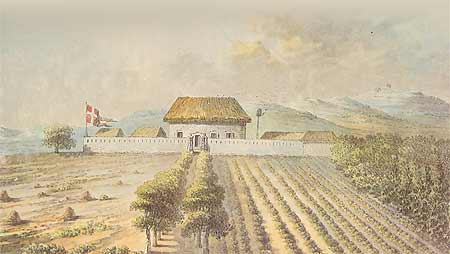
Word of the Day: Ameliorate
Paul Schleifer
Ameliorate means “to make or become better, more bearable, or more satisfactory; improve (www.dictionary.com). It can be used as a transitive (takes an object: The mediator could not ameliorate the situation) or intransitive (does not take an object: The state of the nation is finally ameliorating) verb. English also has a noun, amelioration, which means “an instance of making something better.” Often –tion is, in English, a derivational suffix, a suffix that we use to derive a new word with a different meaning or a different grammatical class (like making a noun out of a verb). But in this instance, amelioration appears in English in the 1650s while ameliorate does not show up until the 1720s, so it may be that ameliorate is what is called a back formation: “the analogical creation of one word from another word that appears to be a derived or inflected form of the first by dropping the apparent affix or by modification” (www.dictionary.com).
According to www.etymonline.com, ameliorate shows up in English in “1728, ‘to make better,’ in some cases perhaps a back-formation from amelioration on pattern of French améliorer, or else from Medieval Latin amelioratus, past participle of ameliorare. Intransitive sense ‘grow better’ is from 1789. The simpler form meliorate was used in Middle English.” The website adds (under amelioration), “from Late Latin meliorare ‘improve,’ from Latin melior ‘better,’ perhaps originally ‘stronger,’ from PIE root *mel- (2) ‘strong, great.’”
On this date in 1792, according to https://www.onthisday.com/today/events.php, Denmark, under King Christian VII, became the first European nation to ban the trade in African slaves, although the law did not actually take effect until 1803.
The Danes had been involved in trading slaves for some 1000 years or so prior to this 1792 act. First, it was the trade in Norse thralls (slaves), many of whom were taken from England. This trade in Anglo-Saxons (and others) lasted until the conquest of England by the Normans, who were themselves descendants of the Norse, in 1066. Later, like a number of other European powers, they became involved in the African slave trade, mostly transporting African slaves to their colonies in the New World. Danish ships transported approximately 120,000 Africans to slavery during the 17th and 18th centuries.
What led up to this law may have been the work of a German botanist named Paul Erdmann Isert (1756-1789). Isert took a post as chief surgeon to the settlement of Christiansborg in Danish Guinea. He was interested in collecting plant specimens from the west coast of the African continent. But once he got there, he found the people uneducated and taken advantage of, so he determined to record all aspects of life on what is called the Gold Coast, creating a biological and sociological record. After three years, he left Danish Guinea to return to Europe on the first ship he could board, and that ship happened to be a slave trader bound for the New World and, eventually, Europe.
This return journey took him through the West Indies, and it was there that he formed his opinions on slavery. He wrote to his father, asking questions about how Christians could tolerate the misery caused by the practice. He published Reise nach Guinea und den Caribäischen Inseln in Columbia (Journey to Guinea and the Caribbean Islands in Columbia), recording his experiences in the New World and criticizing the practice of slavey. He even came up with a proposal for establishing plantations in Africa itself and employing Africans rather than enslaving them. He returned to Danish Guinea to put this plan into effect, but he died before it could become successful.
But his book and his effort to establish his plantation in Africa were enough to convince Christian VII and his son, Prince Frederick, to end Danish participation in the slave trade, and the law which followed began the European movement out of the trade altogether. The British outlawed slave trading in 1807, the US banned the trade the next year, the Spanish in 1811, the Swedes in 1813, the Dutch in 1814, and the French in 1826. In 1833, the British outlawed slavery in all of its territories, followed by the Danish in 1846, the French in 1848, the Dutch in 1861, and the US in 1863.
Of course, slavery still exists in some parts of the world, though it is hard to know how many. Nevertheless, through the work of people like Paul Erdmann Isert, human freedom around the world has been ameliorated.
The image is a watercolour illustration of the Danish Guinean plantation, Frederiksted, from 1790.